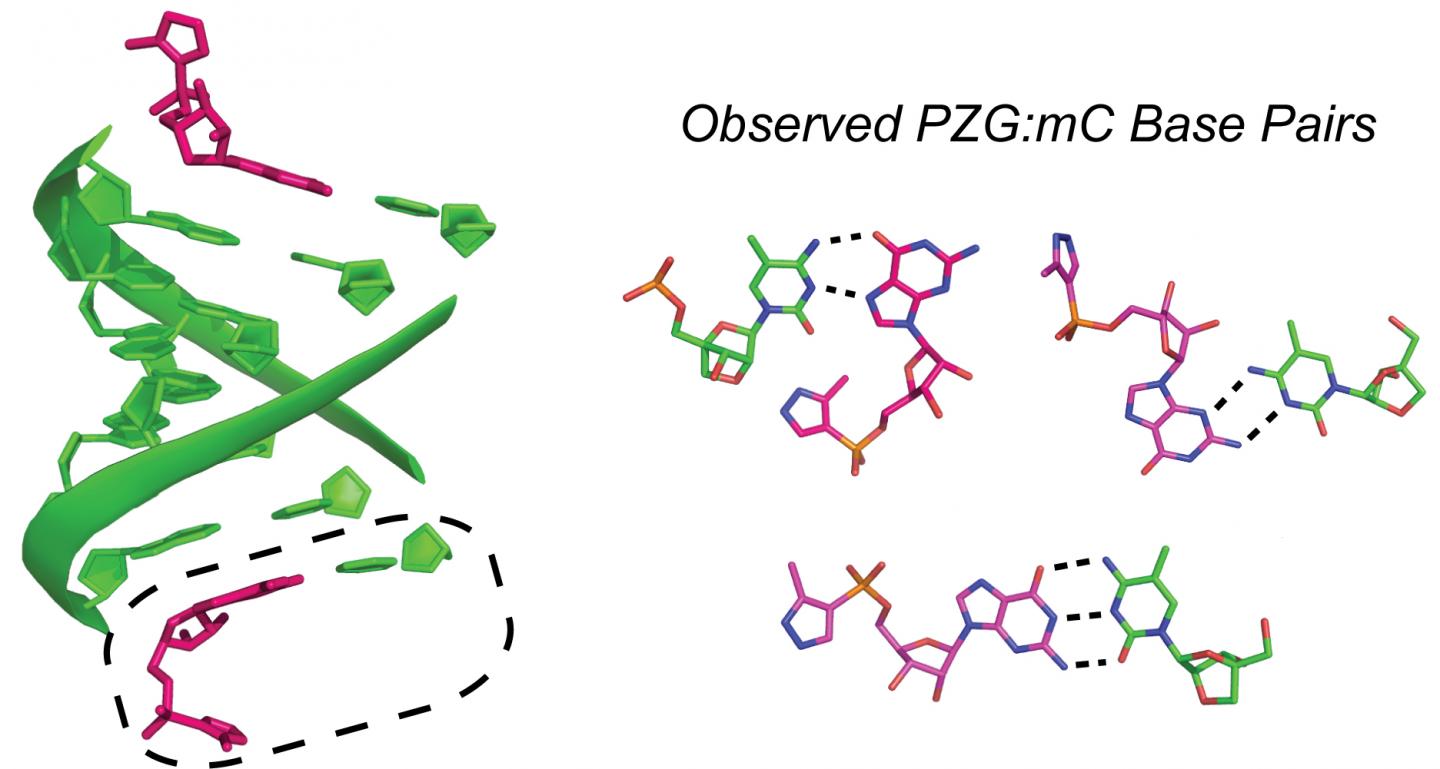
Credit: American Chemical Society
It's the ultimate chicken-or-egg conundrum: What was the "mother" molecule that led to the formation of life? And how did it replicate itself? One prominent school of thought proposes that RNA is the answer to the first question. Now, in ACS Central Science, researchers in this camp demonstrate RNA has more flexibility in how it recognizes itself than previously believed. The finding might change how we picture the first chemical steps towards replication and life.
Today, plants, animals and other organisms reproduce by making copies of their DNA with the help of enzymes and then passing the copies onto the next generation. This is possible because genetic material is made of building blocks — or bases A, T, U, G and C — that pair up in a specific way. A pairs with T (or U in RNA), and G pairs with C. This rule is called Watson-Crick base pairing, named after the scientists who were credited with solving DNA's structure. But before life as we know it existed, some molecule had to replicate without any help at all. RNA is a likely suspect for this go-it-alone first status because it is simultaneously capable of specific base-pairing like DNA, and catalyzing reactions, like an enzyme. Thus, Jack Szostak and colleagues wanted to investigate how RNA matches up with free nucleotides to see whether its base-pairing methods would allow RNA to copy itself without any outside aid.
They monitored how an analogue of a free nucleotide interacted with a short piece of RNA using the classic method of X-ray crystallography — the same technique used more than fifty years ago in the original discovery of DNA's 3-D structure. In addition to forming the expected canonical Watson-Crick pairs, the RNA bonded with the analogue in other less frequently observed ways. Under prebiotic conditions, these unexpected non-Watson-Crick pairings might have caused dead-ends to replication. Thus, the results suggest that the first steps toward life required more trial and error than previously thought.
###
The authors acknowledge funding from the Department of Energy, the Howard Hughes Medical Institute and the Simons Foundation.
The paper will be freely available on November 2, at this link: http://pubs.acs.org/doi/full/10.1021/acscentsci.6b00278
The American Chemical Society is a nonprofit organization chartered by the U.S. Congress. With nearly 157,000 members, ACS is the world's largest scientific society and a global leader in providing access to chemistry-related research through its multiple databases, peer-reviewed journals and scientific conferences. Its main offices are in Washington, D.C., and Columbus, Ohio.
To automatically receive news releases from the American Chemical Society, contact [email protected].
Follow us: Twitter Facebook
Media Contact
Michael Bernstein
202-872-6042
@ACSpressroom
http://www.acs.org





